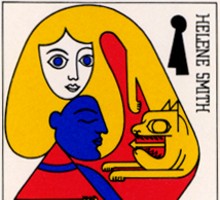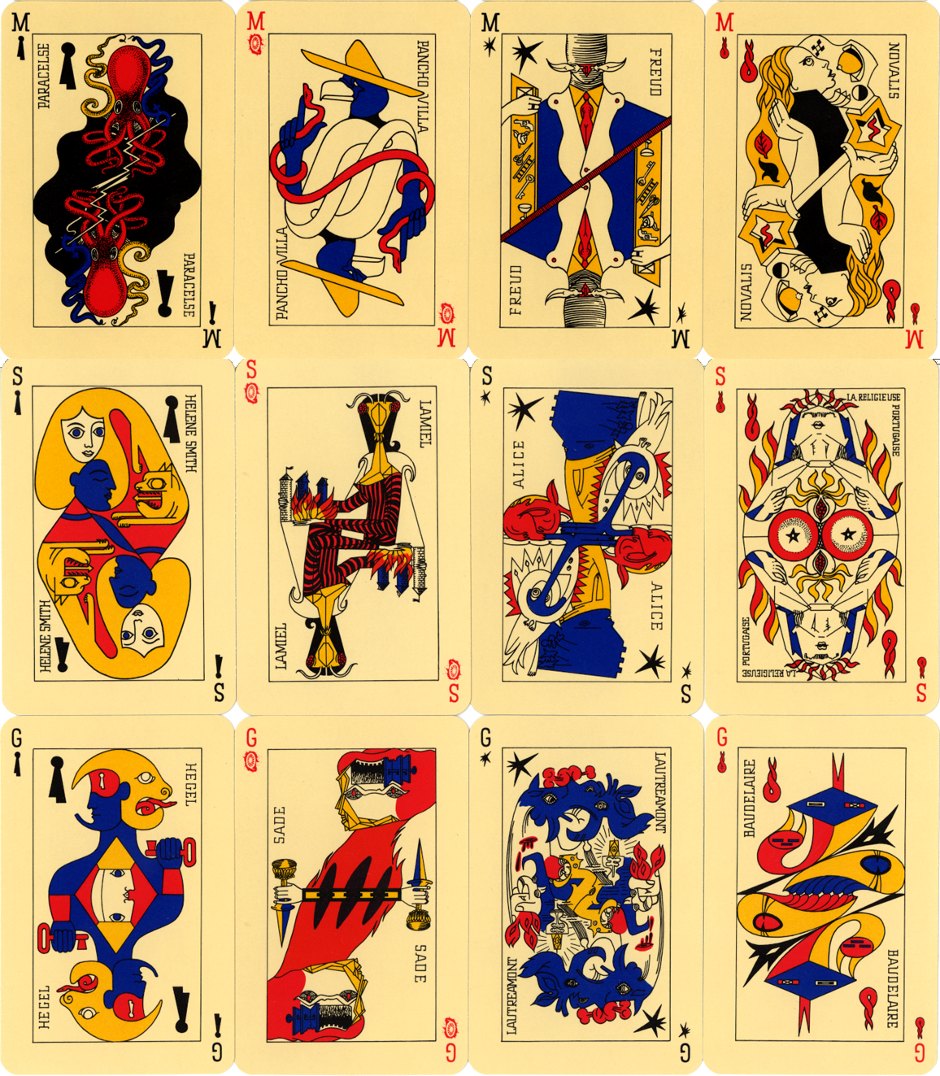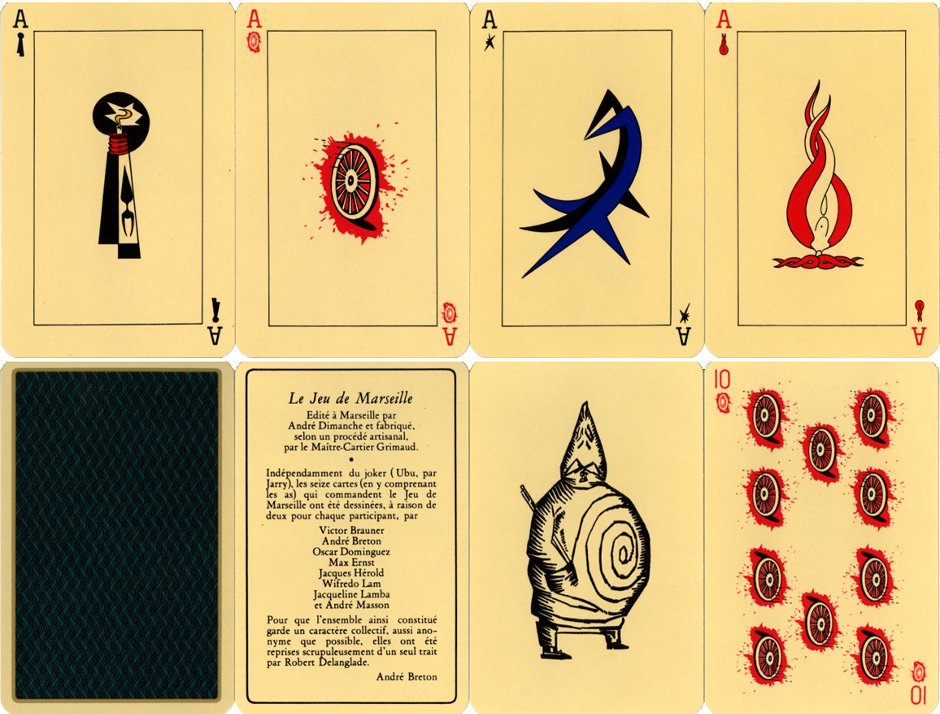Le Jeu de Marseille
Having deconstructed traditional, bourgeois playing card symbolism they produced new, liberated designs expressing their own beliefs and values. The court cards were persons expressing new, revolutionary ideals.

“Le Jeu de Marseille” ~ myth, dreams & imagination...
In the 1940s André Breton and a group of his Surrealist friends (Wifredo Lam, Max Ernst, Jacqueline Lamba, Oscar Dominguez, Victor Brauner, Jacques Hérold, André Masson and Frédéric Delanglade) were stranded in the French port of Marseilles whilst attempting to escape Nazi-occupied Europe and gain passage to America. Having deconstructed traditional, bourgeois playing card symbolism they produced new, liberated designs expressing their own beliefs and values. The court cards were persons representing new, revolutionary ideals. As Breton was a Communist, the conventional court hierarchy denoting military power and rank was unacceptable: these were re-named Genius, Siren and Magus...

Above: cards from “Le Jeu de Marseille” published by Grimaud, Paris, 1983. The designs were first published in VVV Magazine (devoted to the dissemination of Surrealism), New York in 1943. Images courtesy Barney Townshend.
Having deconstructed traditional playing card designs, Breton wanted a thorough reinvention along Surrealist principles. The suits were renamed: Locks (black) for knowledge, Wheels (red) for revolution, Stars (black) for dreams and Flames (red) for love and desire. Surrealist ideas inspired many young artists to move away from conventional views of artistic composition towards abstract expressionism.

The “Jeu de Marseille” was eventually produced as a full deck of cards (with the original sketches being reworked slightly) in 1983 and has been reprinted several times. • See also: Salvador Dalí Surrealist Playing Cards →

By Barney Townshend
Member since October 06, 2015
Retired Airline Pilot, interested in: Transformation Playing Cards, Karl Gerich and Elaine Lewis. Secretary of the EPCS. Treasurer of the IPCS.
Related Articles

Modern Swiss-German Pattern (carta.media)
Modernizing tradition: balancing clarity and continuity in regional card design.

Archaic Spanish-suited pattern from Bayonne
Archaic Franco-Spanish pattern from Bayonne by a manufacturer with the initals M.V.

Tactics Design
Late modernist Japanese playing cards designed by Masayoshi Nakajo for Tactics Design.

Caisse Mutuelle d'Assurance et de Prevoyance
Insurance propaganda pack for Caisse Mutuelle d'Assurance et de Prevoyance with humorous artwork by ...

The Decadent Deck
Studies in the eroticism of the female body by Inge Clayton.

Historic Shakespeare
“Historic Shakespeare” playing cards featuring Shakespearean characters by Chas Goodall & Son.

Sunday Night / Nichiyoubi no Yoru
An irreverent, avant-garde deck unofficially titled "Nichiyoubi no Yoru" (Sunday Night), designed by...

Emilio Tadini playing cards
Beautiful dreamlike playing card designs by Emilio Tadini.

Jeu Révolutionnaire
Court cards and aces from a French Revolutionary pack by Pinaut, Paris, c.1794.

French Revolutionary cards by Pinaut
Seven cards from a French Revolutionary pack by Pinaut featuring characters from classical antiquity...

Zürcher Festspiel 1903
Swiss-suited pack designed by Robert Hardmeyer featuring figures from art and politics.

Tarot de Valverde de la Vera
A series of 24 surrealist engravings by Mexican artist Claudio Favier in which archetypal Tarot alle...

Never Mind the Belote
Limited edition Belote pack with designs by a collective of 24 street artists.

Sannois dans les étoiles
Celebrities and buildings associated with Sannois, a commune in the suburbs of Paris.

Playing card designs by Franz Exler
Reconstruction of playing cards from the original 1903 designs.

MITSCHKAtzen
Clever cat designs by the Austrian artist and illustrator Willi Mitschka.
Most Popular
Our top articles from the past 28 days

